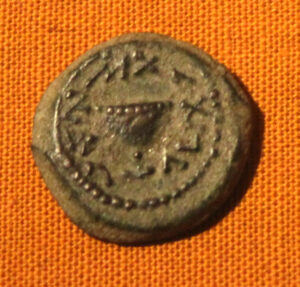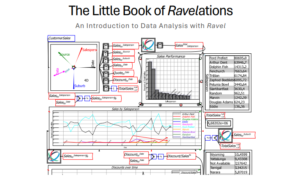This is part of our series on the book “What Has Government Done to Our Money?“. This post discusses one of the main concepts where the author of the book (Murray Rothbard) seems to disagree with what anthropologists tell us about the origin of money.
Origin of money: per the author
The author consistently refers to money as having been created to make barter more efficient. To allow for what is called “indirect exchange”.
This is a common classical narrative.
If in a community, one cow is worth 30 chickens and the one party has a cow but the other party has only 15 chickens, the trade doesn’t happen. It can’t happen because the one party is short 15 chickens.
Something is needed to allow for “indirect exchange”.
Indirect exchange is when some third party medium or token is used to facilitate exchange. Indirect exchange is allowed for through the use of money.
The claim is that money allows for indirect exchange. The guy with the cow sold it previously to someone who wanted a cow, and now has money to give to the guy who has 15 chickens.
Then after some time, governments took control of money and messed things up.
Origin of money: per anthropologists
According to David Graeber, an anthropologist who wrote a book about the history of money (Debt: The First 5,000 Years), anthropologists have been telling economists for well over 100 years that the common and classic narrative above has never once been observed in the anthropological record of human history.
Zero evidence supporting this idea has been found, and a lot of evidence has been found for a different origin of money, that occurred at various times (all during the Bronze Age I believe) in various places as separated as China, India, and the Mediterranean.
Prior to the invention of money, a system of credit was used to facilitate transactions. If the two parties above wanted to trade one cow for thirty chickens, but the one guy only has 15 chickens, the cow and the 15 chickens were exchanged and the one guy owes the other guy 15 chickens worth of value.
This worked because everyone lived in small communities and everyone knew their neighbors well. People didn’t travel. Per archeologists this has been found in archeological evidence of Neolithic societies in various parts of the world.
The original form of “currency” was this informal systems of credit.
As societies grew larger and more complex, kingdoms formed.
Kingdoms had (what was to them) very large boundaries and those boundaries needed to be protected from other kingdoms.
Armies came into being. Armies traveled.
Villagers still (mostly) did not. Now the credit system used by the villagers broke down.
Some stranger with a sword wants a chicken. Since he’s a stranger and you’re likely to never see him again, it’s unlikely he will ever pay you back, so the old system of credit stopped working.
So how does the King provision the army?
Through the simultaneous inventions of money and taxes.
Ancient Kings would claim ownership of the gold and silver mines in the kingdom.
This was a common occurrence, and this reality alone indicates the idea of there being a free market in gold was unlikely to have ever occurred.
Kings tended to control things as they deemed appropriate.
So, why would the King pay people in silver, and then take some back once a year? Why would that make sense? The King already owns all the silver.
Anthropological evidence shows us money was not invented to facilitate barter or create indirect exchange. Money and taxes were created together as a means of the state provisioning itself from the larger economy with what it felt it needed.
This basic idea of states, money, and taxes going together is how money works today. Money, in addition to being a standard of value and a medium of exchange, is first and foremost the tax credits we need to pay out taxes.
This is not a statement of ideology. This is not a statement of what could be or what should be, but rather a statement of what is.
What money is, why money exists, and how money works.
There is a really sick joke I’m going to tell, except it’s not a joke. It’s illustrative of why money exists.
England colonized a part of Africa where there were deposits of copper. The English wanted the copper.
They instructed the natives that they’ll need to work in the copper mines. The natives don’t see the sense in that. They’ve never needed copper before and see no reason to mine it now.
The English army commander explains they need to work for money in order to pay their taxes.
They natives ask what taxes are. It is explained that taxes are the money they pay to the government (in this case the English) every year for government protection.
The natives, of course, ask “protection from what?”. Protection was never needed before the English arrived.
The very sick punch line is the natives needed protection from the English. If the natives don’t pay their taxes, the English army burns their huts.
Again, this is a very sick joke, but it illustrates the relationship between governments, coercion, money, and taxes, that has existed since humans formed governments.
For a fuller understanding of how this worked, watch the video below. David Graeber is an Anthropologist who taught at the London School of Economics (he unfortunately died during the Covid pandemic, but I believe he died of something other than Covid).
The video below is where he is giving a talk about the book referenced above: “Debt, The First 5,000 years”.
For the first 20 to 30 minutes, he talks about how various human cultures have equated debt with morality, after which he talks about the origin of money.



